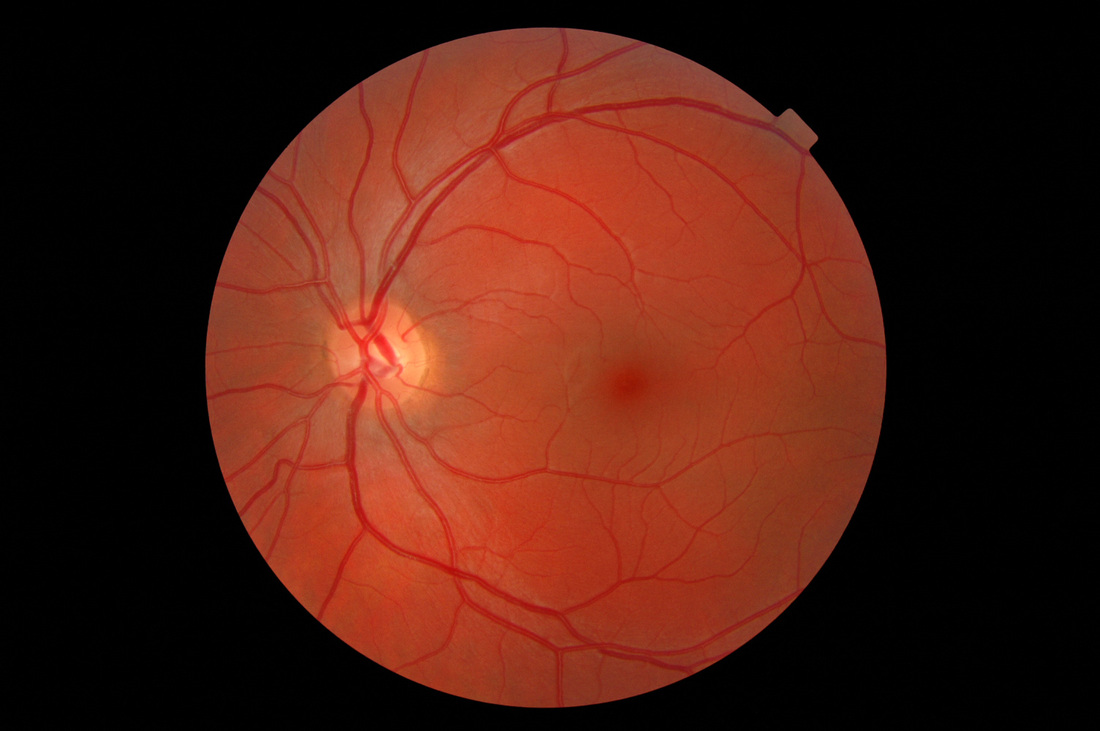Retinal photography: What is your Optometrist looking at?
|
A short guide to interpreting a retinal photograph.
The central dark area is called the macula. It is the most sensitive part of the eye and in some patients as they get older, this area can deteriorate in a condition called age-related macula degeneration, where there can be a loss of central vision. Over to the side the slightly oval looking shape is called the optic nerve head. This may appear slightly orange in colour around the edge and quite pale in the middle. This is where all the optical nerves enter and leave the eye. The optometrist will look closely at the optic nerve as excessive pallor in the middle can sometimes indicate early signs of glaucoma. You can also see the retinal veins and arteries, branching out from the optic nerve head. The veins are thicker and generally darker, almost purple in colour. That's because they are carrying blood which doesn't contain any oxygen on its way back to the heart. |
The arteries are thinner, brighter and redder in colour. They are carrying blood full of oxygen, bringing blood to the eye.
It is important to look closely at the veins and the arteries as this is where we see changes in patients with high blood pressure or in other conditions such as diabetes.
The eye is in fact, the only place in the body where blood vessels can be directly observed without making any incision.
Each retinal photograph you have taken will be saved against your patient record. When you return for your next eye examination, another retinal photograph will be taken and the pictures compared. Any changes will be spotted immediately.
It is important to look closely at the veins and the arteries as this is where we see changes in patients with high blood pressure or in other conditions such as diabetes.
The eye is in fact, the only place in the body where blood vessels can be directly observed without making any incision.
Each retinal photograph you have taken will be saved against your patient record. When you return for your next eye examination, another retinal photograph will be taken and the pictures compared. Any changes will be spotted immediately.
